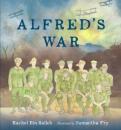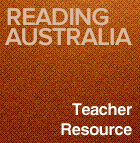'Alfred’s War is a powerful story that unmasks the lack of recognition given to Australian Indigenous servicemen who returned from the WWI battlelines. Alfred was just a young man when he was injured and shipped home from France. Neither honoured as a returned soldier or offered government support afforded to non-Indigenous servicemen, Alfred took up a solitary life walking the back roads – billy tied to his swag, finding work where he could.
'Alfred was a forgotten soldier. Although he had fought bravely in the Great War, as an Aboriginal man he wasn’t classed as a citizen of his own country. Yet Alfred always remembered his friends in the trenches and the mateship they had shared. Sometimes he could still hear the never-ending gunfire in his head and the whispers of diggers praying. Every year on ANZAC Day, Alfred walked to the nearest town, where he would quietly stand behind the people gathered and pay homage to his fallen mates.
'Rachel Bin Salleh’s poignant narrative opens our hearts to the sacrifice and contribution that Indigenous people have made to Australia’s war efforts, the true extent of which is only now being revealed.' (Publication summary)






